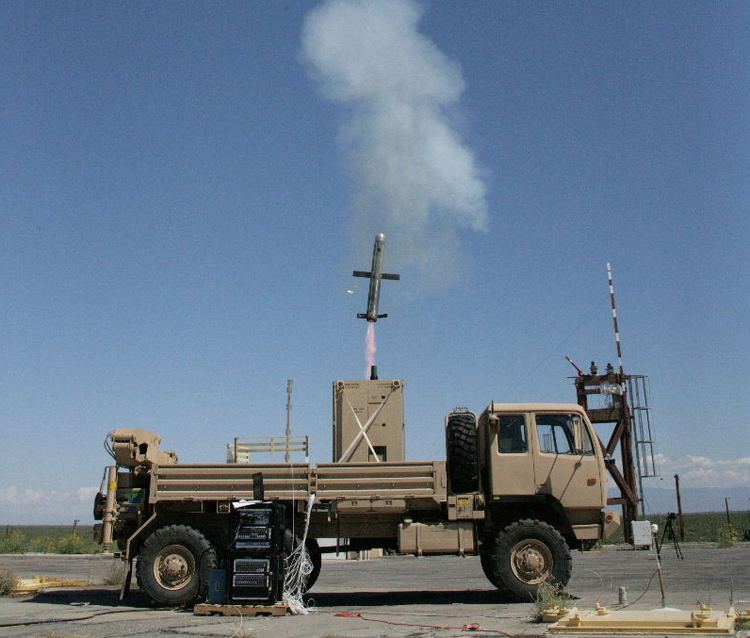Place of origin United States Produced Canceled | ||
 | ||
Type Self-contained missile launch system Weight 3,150 lb (1.58 short tons; 1.41 long tons) | ||
The Non-Line of Sight Launch System (NLOS-LS) was a self-contained missile launcher system that was under development by NETFIRES LLC, a partnership between Lockheed Martin and Raytheon. Each Container Launch Unit (CLU) holds 15 missiles, and a self-locating networked communications system. CLUs can be linked for coordinated launching, with the missiles fired and controlled remotely via autonomous vertical launch. The weapon is roughly 2 metres tall.
Contents
- Concept
- Precision Attack Munition PAM
- Specifications
- Loitering Attack Munition LAM
- Development
- References
The program was cancelled early 2011. It was being developed for the United States Navy's Littoral Combat Ship, but has been criticised for performance issues. The Griffin missile has been recommended for use instead. NLOS-LS was to be used primarily on the United States Army's Future Combat Systems before it was canceled.
Concept
There were to be two types of missile used with NLOS-LS: the Precision Attack Munition (PAM) and the Loitering Attack Munition (LAM). The LAM was originally contracted to Lockheed Martin Missiles and Fire Control, but the contract was terminated after costs rose and tests went poorly. As it stands now, the PAM is the only armament currently being designed for the NLOS-LS.
Precision Attack Munition (PAM)
Used to attack vehicles, armor, bunkers, and other targets of opportunity. Uses 3 modes of guidance, GPS/INS, semi-active laser homing, and autonomous imaging infrared. Carries a multi-mode warhead effective against several types of targets. It also includes an online library of pictures of targets, so that it can visually identify what it is homing in on.
Specifications
Loitering Attack Munition (LAM)
A loitering munition designed to fly to a preset area and loiter while autonomously seeking out targets.
